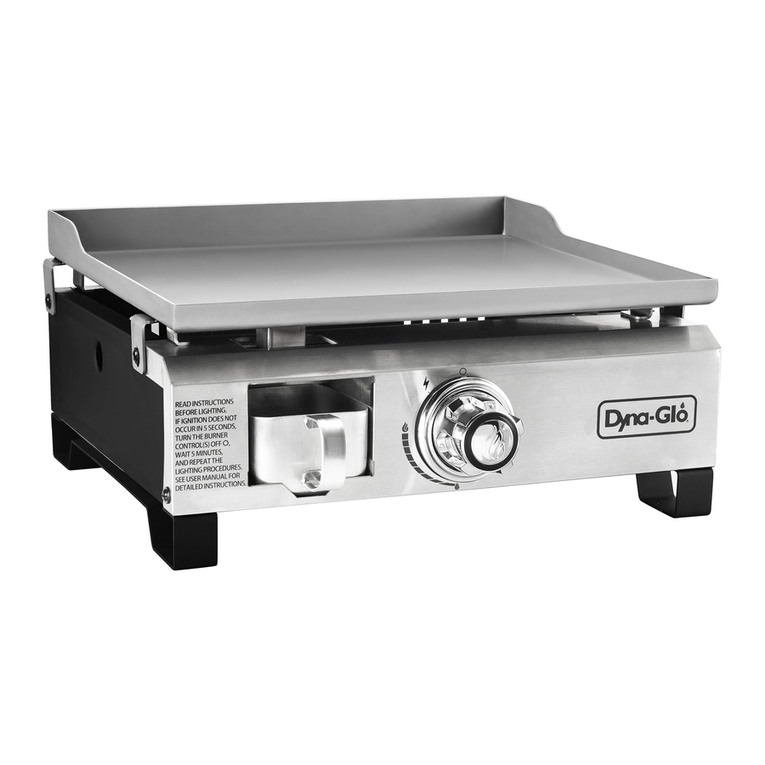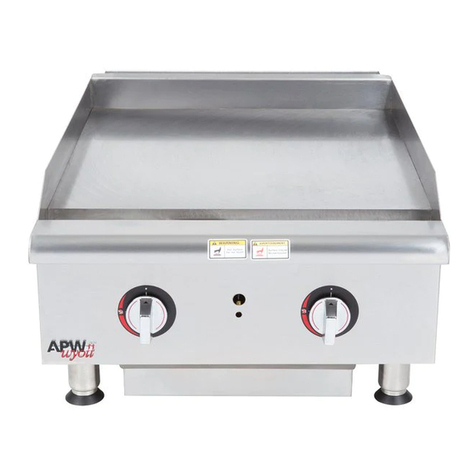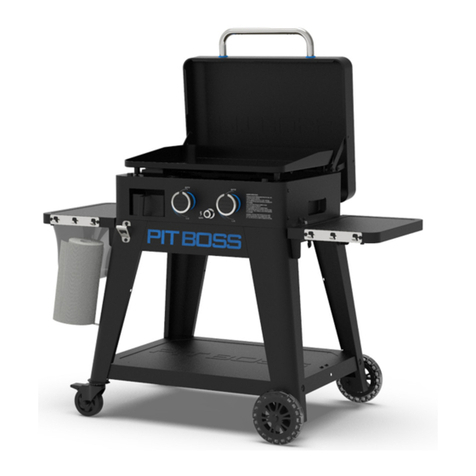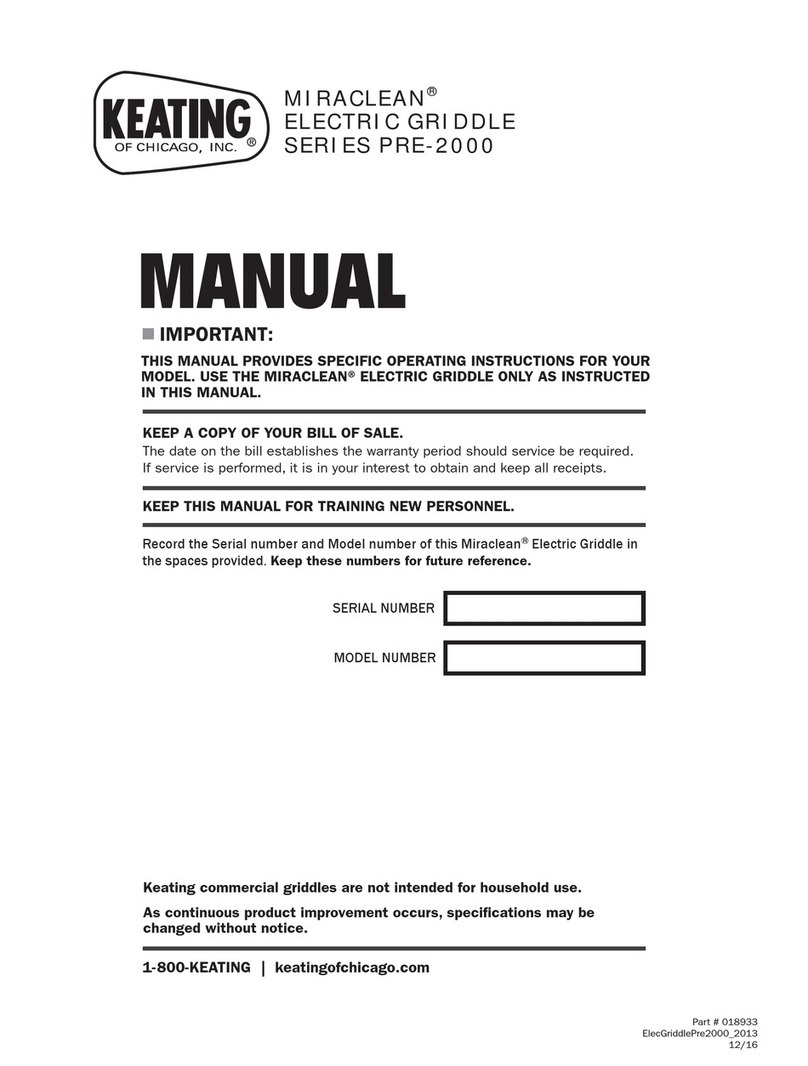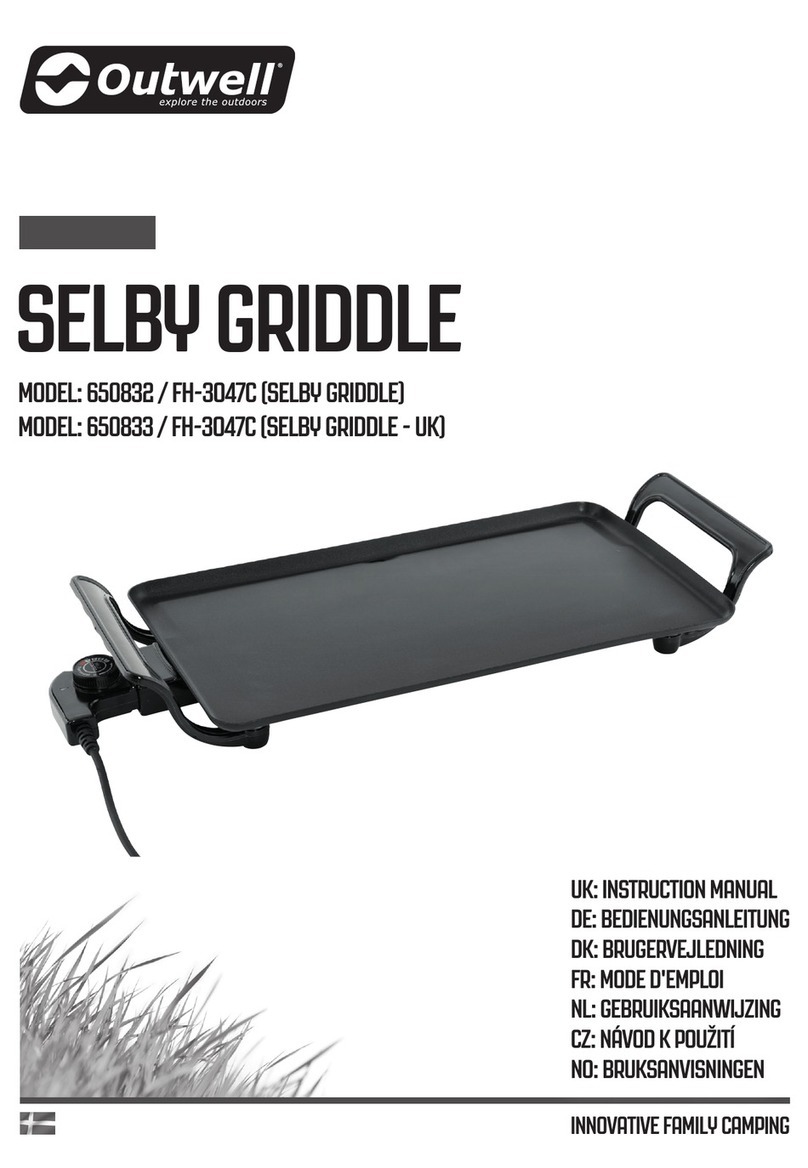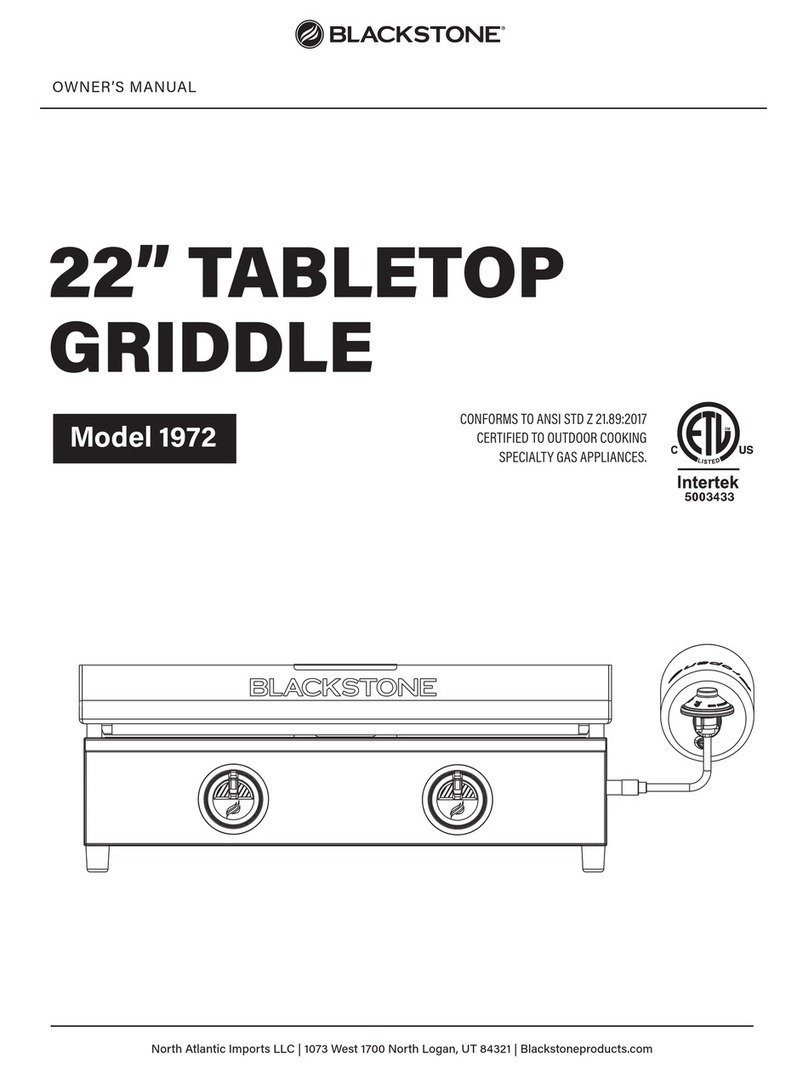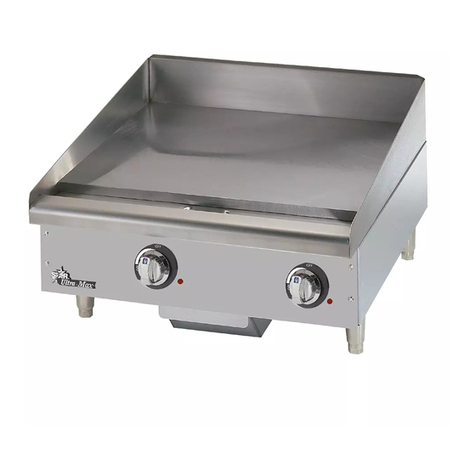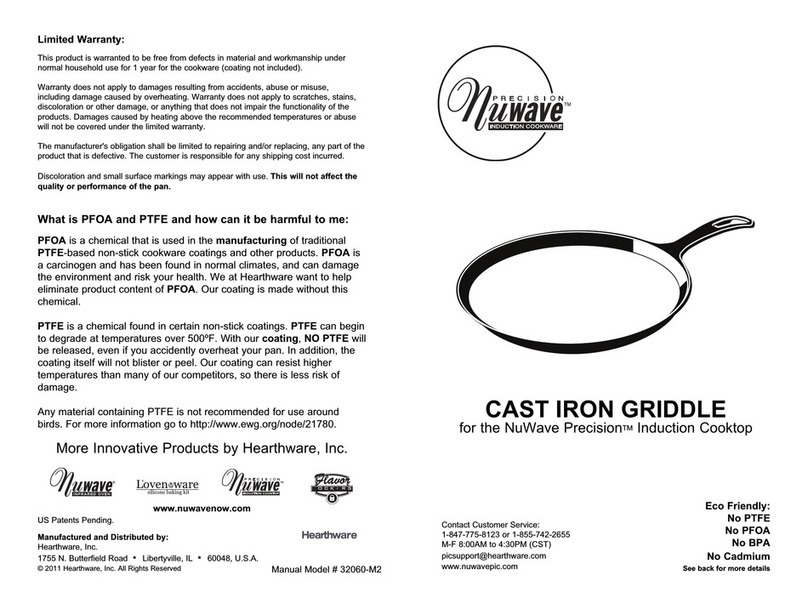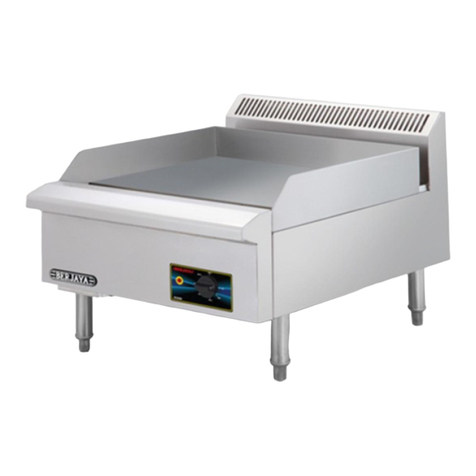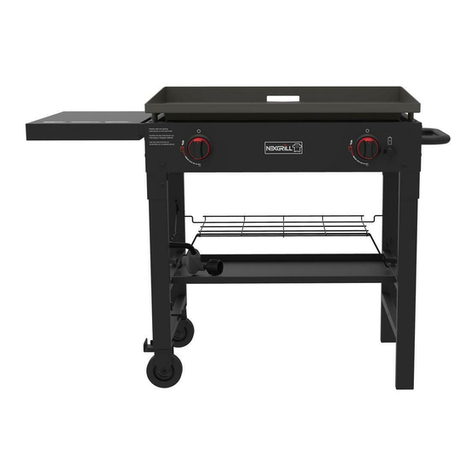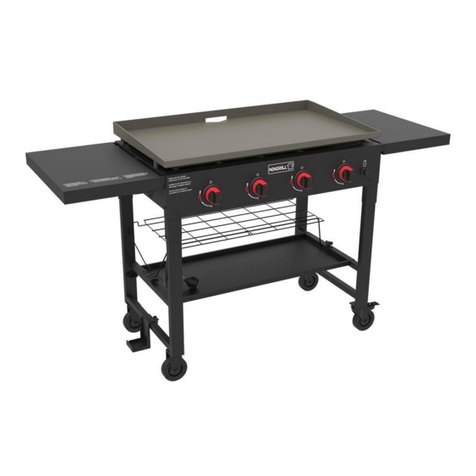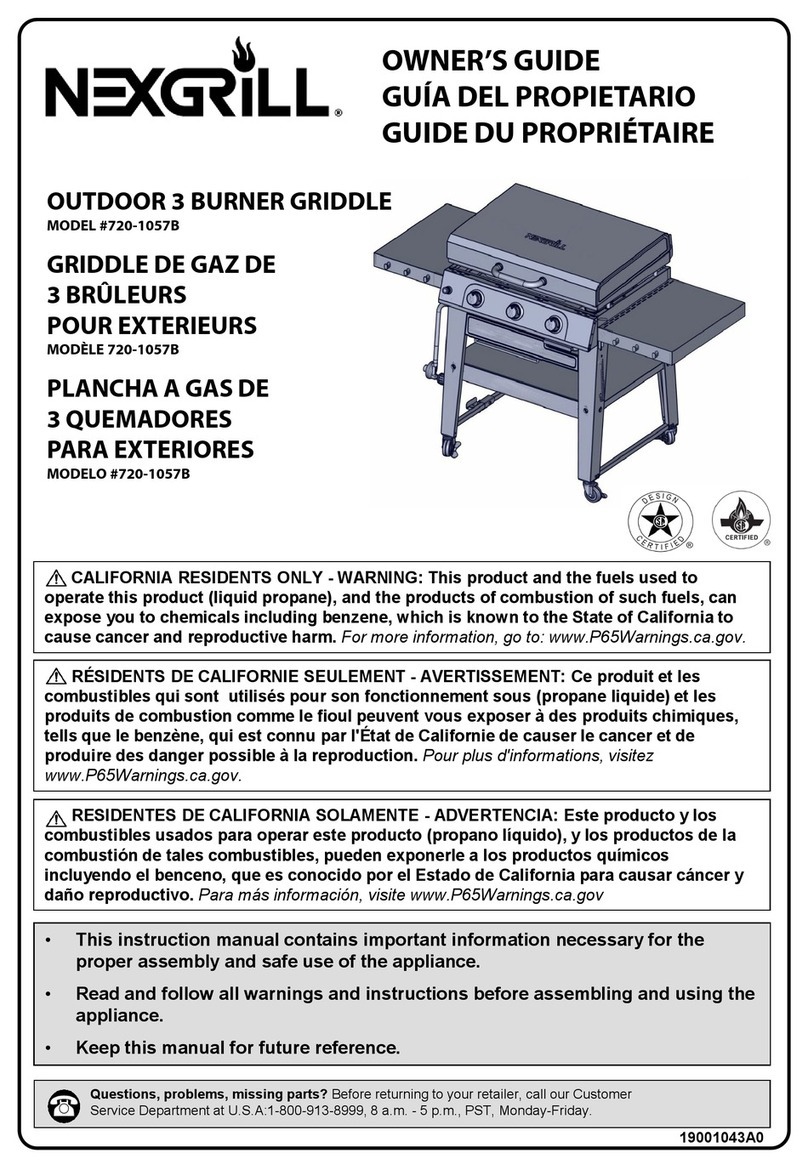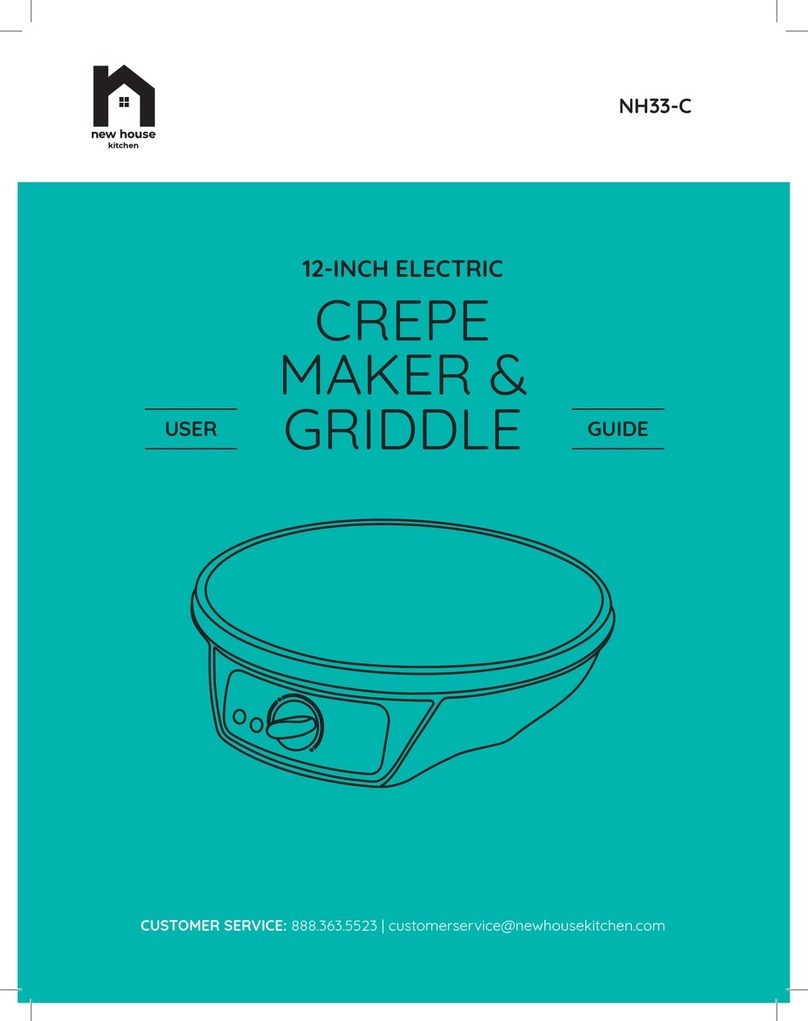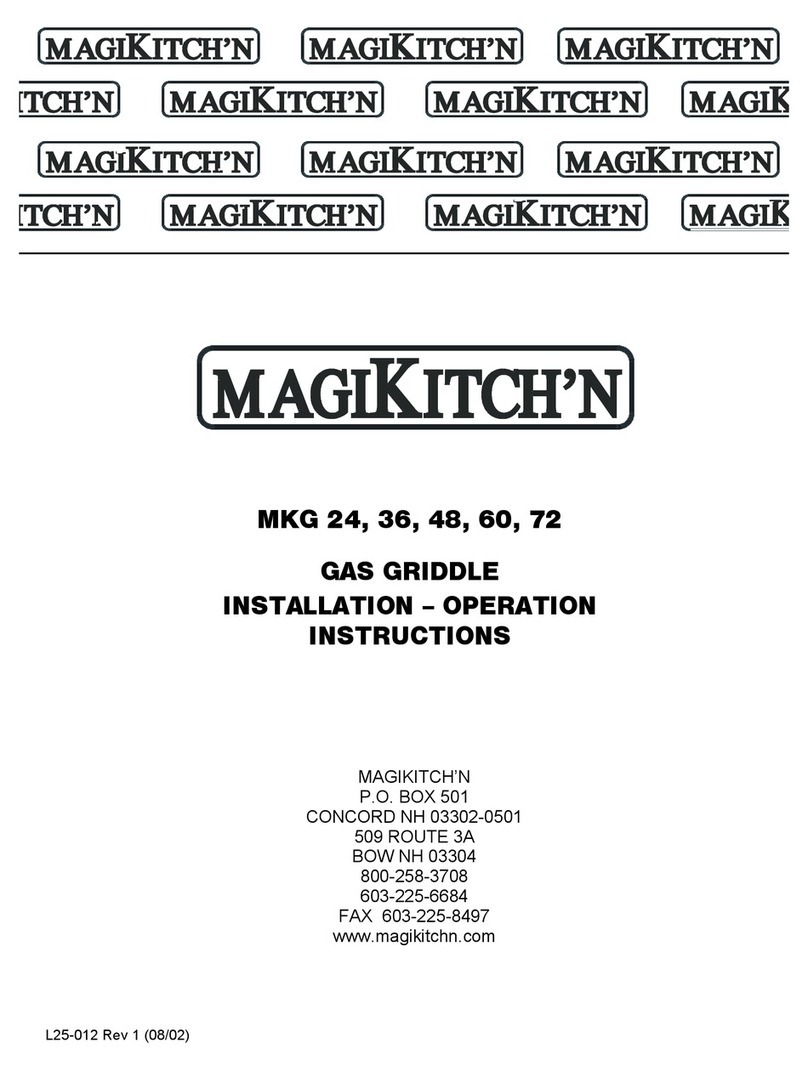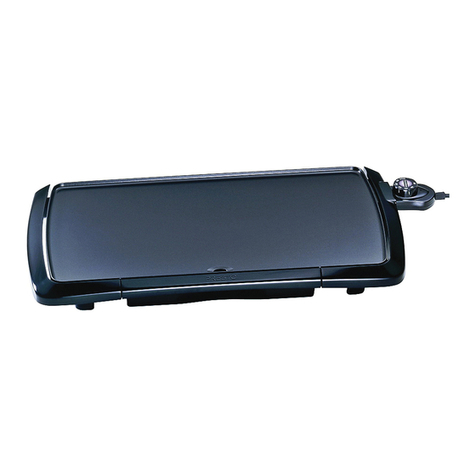
WARNING
Keep a spray bottle of soapy water near the gas supply
valve and check the connections before each use.
DO NOT USE ALUMINUM FOIL TO LINE THE GRILL
RACKS OR GRILL BOTTOM.
This can severely upset combustion airflow or trap
excessive heat in the control area.
SAFETY PRACTICES TO AVOID PERSONAL INJURY
When properly cared for your grill will provide safe, reliable
service for many years. However, extreme care must be used
as the grill produces intense heat that can increase accident
potential. When using this appliance basic safety practices
must be followed, including the following:
Do not repair or replace any part of the grill unless
specifically recommended in this manual. All other service
should be referred to a qualified technician.
This grill is not intended to be installed in or on recreational
vehicles or boats.
Children should not be left alone or unattended in an area
where the grill is being used. Do not allow them to sit, stand
or play in or around the grill at any time.
Do not store items of interest to children around or below the
grill.
Do not permit clothing, pot holders or other flammable
materials to come in contact with or too close to any grate,
burner or hot surface until it has cooled. The fabric could
ignite and cause personal injury.
For personal safety, wear proper apparel. Loose fitting
garments or sleeves should never be worn while using this
appliance. Some synthetic fabrics are highly flammable and
should not be worn while cooking.
Only certain types of glass, heat-proof glass ceramic,
earthenware, or other glazed utensils are suitable for grill use.
These materials may break with sudden temperature
changes. Use only on low or medium heat settings in
accordance with the manufacturer’s guidelines.
Do not heat unopened food containers. A build-up of
pressure may cause the containers to burst.
Use a covered hand when opening the grill lid.
Never lean over an open grill.
When lighting a burner, pay close attention to what you are
doing. Make certain you are aware of which burner you are
lighting, so your body and clothing remain clear of open
flames.
WARNING
This outdoor cooking gas appliance is not intended to be
installed in or on boats. And other recreational vehicles.
When using the grill, do not touch the grill rack, burner grate
or immediate surroundings as these areas become
extremely hot and could cause burns. Use only dry
potholders. Moist or damp potholders on hot surfaces may
cause steam burns. Do not use a towel or bulky cloth in
place or potholders. Do not allow potholders to touch hot
portions of the grill rack.
Grease is flammable. Let hot grease cool before attempting
to handle it. Do not allow grease deposits to collect in the
grease tray at the bottom of the grill’s firebox. Clean the
grease tray often
Do not use aluminum foil to line the grill racks or grill bottom.
This can severely upset combustion air flow or trap
excessive heat in the control area.
For proper lighting and performance of the burners keep the
burner ports clean. It is necessary to clean them periodically
for optimum performance. The burners will only operate in
one position and must be mounted correctly for safe
operation.
Clean the grill with caution. To avoid steam burns, do not
use a wet sponge or cloth to clean the grill while it is hot.
Some cleaners produce toxic fumes or can ignite if applied
to a hot surface.
Turn off grill controls and make certain the grill is cool before
using any type of aerosol cleaner on or around the grill. The
chemical that produces the spraying action could, in the
presence of heat, ignite or cause metal parts to corrode.
Do not use the grill to cook excessively fatty meats or other
products which promote flare-ups.
Do not operate the grill under unprotected combustible
constructions. Use only in well ventilated areas. Do not use
in buildings, garages, sheds, breezeways or other such
enclosed areas.
Keep the area surrounding the grill free from combustible
materials including, fluids, trash, and vapors such as
gasoline or charcoal lighter fluid. Do not obstruct the flow of
combustion and ventilation air.
NEVER CONNECT AN UNREGULATED GAS SUPPLY
LINE TO THE APPLIANCE. USE THE REGULATOR/HOSE
ASSEMBLY SUPPLIED.
This is a liquid propane configured grill. Do not attempt
to use another type of gas supply unless the grill has been
reconfigured for that type.
Total gas consumption (per hour) of this gas grill with all
burners on :
Main burners 3 x 4.40 kW
Total 13.2 kW
5
Safety Instruction
